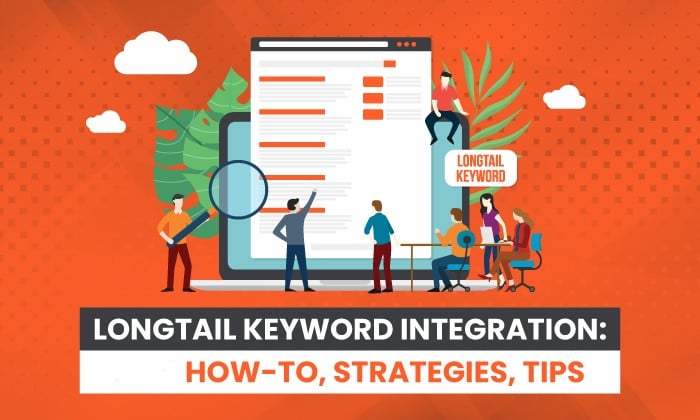Longtail Keywords: How-To, Strategies, Tips

By Neil Patel
How do your website visitors find you?
If they’re clicking to your site from the search engines, chances are they’re finding you through longtail keywords. This free traffic is a huge bonus for your business, and understanding how to integrate longtail keywords better can help you do this.
Here’s how you can integrate longtail keywords in 2021.
What Are Longtail Keywords?
Longtail keywords are long, specific queries letting search engines know not just what words searchers want to know about but why they want to know them.
For example, “longtail keywords” is a keyword; “what are longtail keywords?” is a longtail keyword.
When you run your keyword research, it’s easy to be attracted to the short tail or head keywords. These are the keywords like “SEO” or “keywords,” and they’re likely to have a high search volume, attracting the attention of many marketers.
Where there’s search volume, there’s lots of competition. Longtail keywords with slightly less volume tend to be a little easier to rank for.
Why Should You Integrate Longtail Keywords in Your Blog Posts?
What do you want from your content marketing?
The first thing is probably traffic, and after that, you want conversions. Longtail keywords can make a massive difference to your business in both of these areas.
Paid advertising is a great way to get your brand in front of your target audience, but there’s a catch. You’re paying for every click. If you can gradually replace those paid clicks with organic traffic, not only do you save money, you could see better results. In fact, Google’s Economic Impact Report states organic search is five times more valuable than paid search.
Searches of more than four words make up 95.88 percent of Google searches, meaning there are lots of clicks to be had. Because these searches are more specific, the people making them tend to have greater buyer intent.
Compare the two searches:
“Real Estate” vs. “4-bed real estate in Naperville.”
Which search indicates a buyer who is more ready to purchase?
Longtail keywords often indicate a searcher is well on the road to conversion, and that alone is a pretty strong reason to use them in your content.
How to Integrate Longtail Keywords in Your Posts
Longtail keywords are essential for any business. It doesn’t matter how authoritative your site is; the sheer volume of longtail keywords means they’re something you can’t ignore.
You can’t just take longtail keywords and try to stuff them into your content, though. Modern SEO is about providing the user with the best experience. To do this, you need to integrate longtail keywords into high-quality, relevant content.
1. Set Your Content Marketing Objectives
What do you want to achieve with your blog post?
Your honest answer can help you create user-friendly blog posts to rank more highly in keyword search results.
Copyblogger showcased 10 content marketing goals worth pursuing, including:
- build trust …read more
Source:: Kiss Metrics Blog









